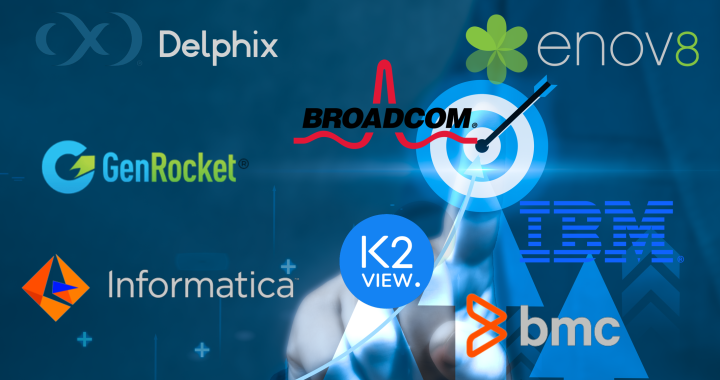Data has undergone a huge shift from being an unimportant asset to being the most valuable asset a company holds. However, just holding the data doesn’t bring many benefits to your organization. To reap the benefits of the data your company collects, data analysis helps you to find valuable insights for the data you hold.
Data lays at the core of many important business decisions. Many companies prefer a data-driven decision-making policy because it greatly reduces guessing and helps the company to shift toward a more accurate form of decision-making. This greatly benefits the company as you have more trust in the choices you make and you can reduce the number of “incorrect” decisions.
For example, say a product company wants to know if users like the new feature they’ve released. They want to decide if they need to make further improvements to the feature or not. To make a more informed decision, the product company collects user satisfaction scores about the new feature. The company can then use the average user satisfaction score to make this decision. Data virtualization helps you to quickly aggregate data from this survey, as well as other important data that influences the decision, in a single, centralized view. This allows your business to make more informed decisions quicker.
This article introduces you to the concept of data virtualization and how it can help your company to make better decisions. Before we start, what are the common problems companies experience with data?
Common Data Problems for Organizations
Here’s a list of data challenges companies commonly experience:
- It’s hard to understand the data you’ve collected.
- Different sources of data use different formats, which makes it harder to retrieve insights.
- Your organization experiences data lag, which means that data isn’t directly available.
- Your organization isn’t ready to handle and process data. This could be due to, for example, missing data infrastructure and tools.
Now that you’ve read the above data problems, make sure your organization is ready to handle and process data. So what is data virtualization?
What Is Data Virtualization?
Data virtualization is a form of data management that aggregates different data sources. For example, a data virtualization tool might pull data from multiple databases or applications. However, it’s important to understand that it doesn’t copy or move any of the data. You can have multiple data silos.
Data virtualization is capable of creating a single, virtual layer that spans all of those different data sources. This means your organization can access data much faster since there’s no need to move or copy data. Furthermore, this is a major benefit as you can access data in real time. Virtualization improves the agility of the system, and companies can run analytics faster, gaining insights quicker. For many companies, being able to retrieve insights faster is a great competitive advantage!
As mentioned, data virtualization doesn’t copy or move any data. It only stores particular meta information about the different locations of the data that you want to integrate into your data virtualization tool.
What Is the Importance of Data Virtualization?
First of all, data virtualization acts as the pinnacle of data integration. It allows an organization to integrate many different data sources into a single data model. This means companies can manage all of their data from a single, centralized interface.
Moreover, data virtualization is a great tool for collecting, searching, and analyzing data from different sources. Furthermore, as there’s no data copying involved, it’s also a more secure way of managing your data since you don’t have to transfer the data.
In other words, data virtualization helps companies to become more agile and use their data faster, creating a competitive advantage as you receive analytics and insights more quickly.
What Are the Capabilities of Data Virtualization?
This section describes the capabilities of data virtualization and why they matter for your business.
- Agility
A data virtualization tool allows you to represent data in different ways, format data, discover new relationships between data, or create advanced views that provide you with new insights. The options are endless. Agility is the most important capability of data virtualization as it decreases the time to a solution. - High performance
A data virtualization tool doesn’t copy or move any data. This contributes to its high-performance nature. Less data replication allows for faster data performance. - Caching
Caching frequently used data helps you to further improve the performance of your data virtualization tool. Whenever you query for data or a specific data view, part of the data is already cached for you. This puts fewer constraints on your network and improves the availability of your data. - Searchability
A data virtualization tool allows you to create data views that provide you with actionable insights. Furthermore, data virtualization provides you with a single, centralized interface to search your data.
Next, let’s explore the benefits of data virtualization for your organization.
What Are the Benefits of Data Virtualization?
Here are 10 important benefits of employing a data virtualization tool for your organization.
- Helps with hiding the data complexity from the different underlying data sources, data formats, and data structures.
- Avoids replication of data to improve performance.
- Gives real-time data access and insights.
- Provides higher data security as no data is replicated or transferred.
- Reduces costs since no investments are needed in additional storage solutions.
- Allows for faster business decisions based on data insights.
- Reduces the need for development resources to integrate all different data sources.
- Allows for data governance to be applied efficiently. For example, data rules can be applied with a single operation to all different data sources.
- Improves data quality.
- Increases productivity as you can quickly integrate new data sources with your current data virtualization tool.
Now that we have a better understanding of the benefits of data virtualization, it’s time to get serious. The next section explains how you can implement data virtualization in your organization.
How to Get Started With Data Virtualization
Do you want to get started with data virtualization for your organization? The most important tip is to start small. Assign a dedicated team who spends time on integrating one or a couple of data sources. Start with data sources that are most valuable for your organization. This way, you’ll see the benefits of data virtualization quickly.
Next, when your team has completed some simple data integrations, it’s time to scale up your operations and use the tool for most of your data sources. You can think about more complex data models, integrate complex data sources, or use data sources with mixed data types.
Furthermore, you can start to experiment with caching to see where it can be applied effectively to gain the most performance benefits. Remember to apply caching to frequently used data or data models.
As a general rule of thumb, prioritize high-value data sources to reap the most benefits.
Conclusion
One final note: data virtualization isn’t the same as data visualization. The two terms are often used interchangeably, but they have very different meanings. Data virtualization isn’t focused on visualizing data. The main goal of data virtualization is to reduce the effort of integrating multiple data sources and providing your organization with a single, centralized interface to view and analyze data.
In the end, the real business value of data virtualization lays in the agility and faster access to data insights. For many organizations active in the industry of big data or predictive analytics, it’s a real competitive advantage to access insights faster than your competitors. This allows you to make profitable decisions faster than the competition.
If you want to learn more, the following YouTube video by DataAcademy further explains the concept of data virtualization in easy-to-understand terms.
Author
This post was written by Michiel Mulders. Michiel is a passionate blockchain developer who loves writing technical content. Besides that, he loves learning about marketing, UX psychology, and entrepreneurship. When he’s not writing, he’s probably enjoying a Belgian beer!



